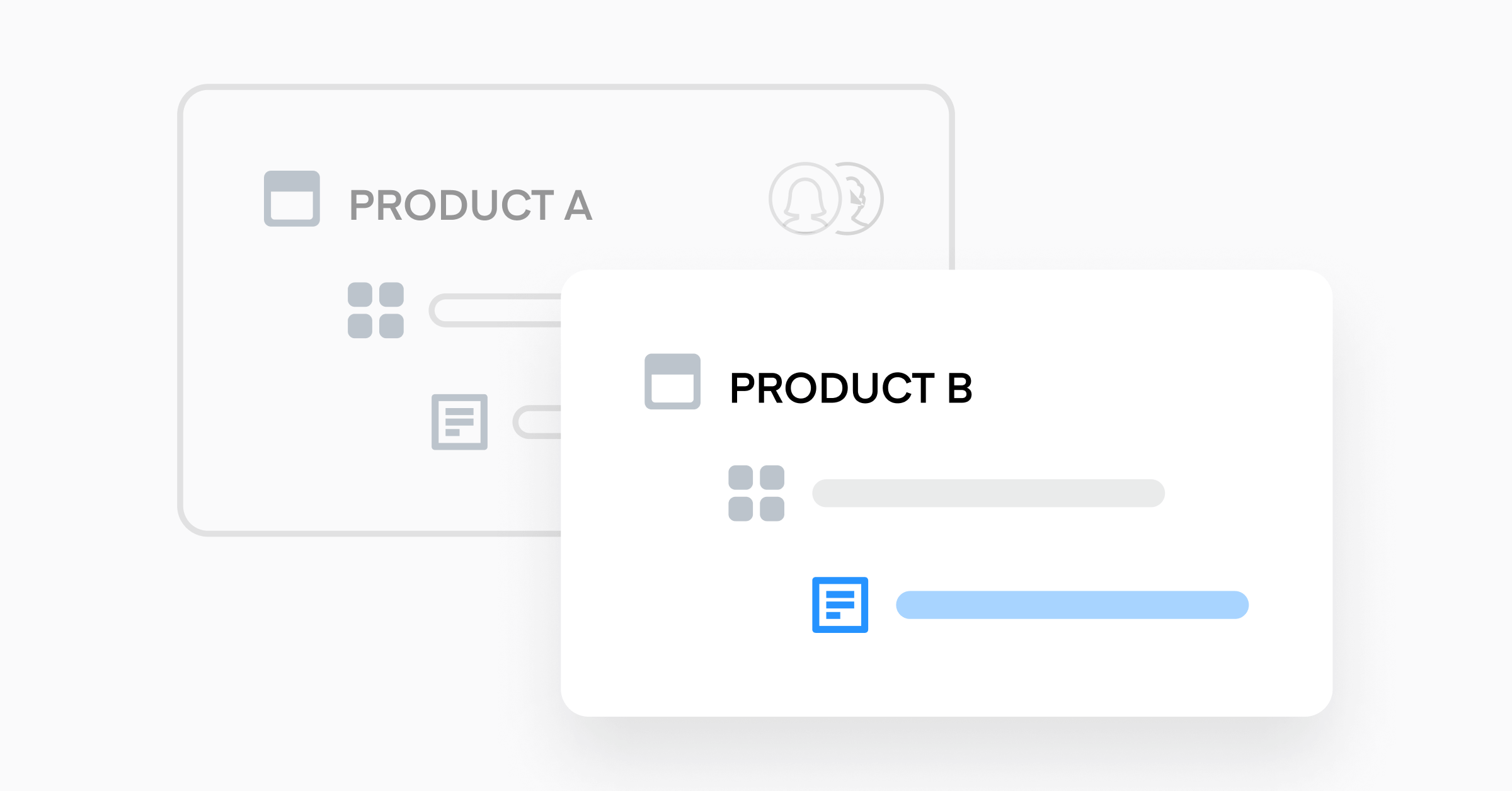How to Build a Product Launch Checklist

Your product launch strategy will shape customer perception and determine market adoption, so it’s critical to build an effective product launch checklist to support. Despite the name, this checklist is more than just a to-do list; it’s a strategic framework designed to guide teams through the multi-stage process of introducing a product to the market. It encapsulates the critical tasks, considerations, and milestones necessary for a seamless launch.
Whether introducing a groundbreaking innovation or iterating on an existing product, product launches are transformative experiences that can shape the trajectory of a business. A successful product launch has the potential to capture market attention, ignite customer enthusiasm, and propel an organization to new heights of profitability and relevance.
A great product is only as great as the marketing that supports it. It’s the product launch strategy that truly determines its impact. A well-thought-out checklist will help align organizational goals with target audience needs and external market dynamics.
The Architecture of a Successful Launch
Creating a comprehensive product launch checklist requires considering every stage of your launch strategy. It takes outlining pre-launch preparations, defining target audience communication, coordinating marketing efforts, ensuring product readiness, and implementing a post-launch evaluation. For a seamless launch, it’s critical to align each step with strategic goals.
Just like a successful product development strategy relies on clear feedback loops, so do launch checklists. Constant communication and collaboration between product and go-to-market (GTM) teams is critical.
Understanding the product launch checklist
Pre-launch prep
The thoroughness of your product launch strategy prep will determine how well your launch goes. Laying a strong foundation is necessary, so make sure to have GTM and product / engineering teams align on all the below factors:
- Conduct market research with customers and internal stakeholders (e.g., Support teams) and undergo a competitor analysis
- Set timelines (e.g., deadlines, project milestones, roadmap phases, etc.) **
- Establish dependencies
- Identify risks and potential blockers
- Determine and create clear, measurable KPIs / objectives to measure success
** Outline the sequence of activities leading up to and following the product launch. Specify the marketing channels, promotional tactics, and communication strategies. Be sure to set realistic timelines and make room for bottlenecks and delays, considering factors like pre-launch teasers, the launch event itself, and follow-ups post-launch.
Target audience communication
To build anticipation and interest, your marketing team needs solid messaging and positioning; they can only achieve this if they can confidently explain that the new product or feature being launched will actually resonate with the target audience. The narrative should emphasize the distinct value the launch will bring. This involves more than just talking about the features; it requires establishing a tangible link between the product and the end-user’s advantages. You’re providing solutions to previously-addressed pain points (hence why market research is so important). The “why” lays the groundwork for a memorable and influential product launch that deeply connects with those you intend to purchase the product.
- Define target audience
- Tailor messaging to their needs—their challenges, what they would like to solve
- Choose the most impactful communication channels
- Determine messaging cadence and budget
Coordinated marketing efforts
It’s important to be intentional with your product promotions. Companies that strategically promote and raise awareness for new products across various platforms and channels will achieve a wider reach, tapping into more prospects. Of course, it’s important to be strategic here; if your end-users are in an older age demographic, leveraging newer platforms like Tik Tok, for example, may be a waste of resources.
- Align with content marketing, product marketing, demand gen, and email teams on:
- Launch emails
- Blog posts
- Enablement webinars
- Landing pages
- Social posts
- Paid ads
- Press releases
- Work with sales team and BDRs to ensure their messaging and phone calls have the right value prop
- Include design and factor in their timelines—understand how long it takes to spin up paid ads, social posts, etc.
Product readiness
Your product launch checklist must include a testing phase, as you wouldn’t want to ship a buggy product that has an amazing marketing campaign (exposing your low-quality product to too many people).
- Allow enough time for testing to iron out of the creases that appear during quality assurance (QA) and beta testing
- Oversee the user experience (UX) and make sure customers that are test-driving the product are happy with the functionality
Post-launch evaluation
Product launches are iterative, not a one-and-done event. How else would you know that your GTM messaging resonated with its intended users?
- Promote post-launch **
- Continuously collect feedback
- Analyze your KPIs identified in pre-launch
- Iterate based on insights for continuous improvement
** To keep the momentum going, employ tactics post-launch such as limited-time offers to instill a sense of urgency or referral programs to encourage customers to share reviews and recommendations.
Everything to Put in Your Launch Checklist
Incorporating the following components into your product launch checklist not only ensures a successful launch but also directly contributes to overarching business objectives. Each component plays a crucial role in achieving increased adoption rates, revenue growth, and customer satisfaction and retention.
Core Components of a Successful Product Launch Checklist
- Conduct thorough market research to understand customer needs, trends, and competitors. Ensuring that the product addresses actual customer needs will increase adoption rates and help provide competitive differentiation in the market.
- Define specific and measurable launch objectives aligned with overall business goals. This will guide efforts toward maximizing user acquisition and product adoption, contributing to revenue growth while increasing internal efficiencies.
- Develop a detailed persona of the ideal customer, informing communication strategies. Understanding the ideal customer ensures that the product aligns with their preferences, which will increase customer satisfaction rates.
- Coordinate cross-channel marketing efforts for a cohesive and impactful launch. Consistent messaging and better brand visibility contributes to higher adoption and new user acquisition; it may even strengthen customer retention if the launch is about a new feature they get excited about.
- Ensure the product is thoroughly tested, user-friendly, and ready for market release. This leads to positive user experiences, which enhances customer satisfaction, and minimizes post-launch issues or bugs, which reduces costs.
- Craft a comprehensive plan for communicating with the target audience pre- and post-launch. Clear and consistent communication builds anticipation and interest and fosters a deeper connection with customers, strengthening brand loyalty and improving customer retention.
- Implement systems to collect and analyze feedback for continuous improvement. Addressing feedback contributes to customer satisfaction and retention, impacting long-term business success and revenue growth.
- Assess key performance indicators, analyze data, and iterate based on insights for future launches. Analyzing KPIs provides insights into the effectiveness of your strategies, optimizing resource allocation and overall eternal efficiencies for the next launch.
Creating an Agile Product Launch Checklist Roadmap
Making a product launch checklist more agile involves incorporating principles and practices that enable flexibility, adaptability, and responsiveness to changes. By following the below product development tips, you can create a more dynamic and responsive process that is better equipped to handle changes and uncertainties in both the market and project requirements.
- Iterative Planning: Break down the launch process into smaller, manageable iterations. Plan for short cycles of development and testing to gather feedback quickly.
- Cross-Functional Collaboration: Encourage collaboration between different teams (development, marketing, sales) from the beginning—not just when development is finished and it’s ready to be marketed. Foster communication to ensure everyone is on the same page and can adapt as needed.
- Prioritize and Refine: Identify and prioritize the essential features and tasks. Regularly review and refine the checklist based on changing priorities and feedback; what your customers say they want matters the most.
- Continuous Integration and Deployment: Implement continuous integration and deployment practices to streamline the release process. Automate testing and deployment to reduce manual errors and speed up the release cycle.
- Feedback Loops: Establish feedback loops throughout the product development and launch process. Gather input from stakeholders, customers, and team members to make informed adjustments.
- Risk Management: Identify potential risks early in the process. Have contingency plans in place and regularly reassess risks as the launch progresses.
- Documentation: Keep documentation lightweight and adaptable. Use living documents that can be easily updated to reflect changes in requirements, priorities, or strategies.
- Agile Frameworks: Consider adopting an agile framework like Scrum or Kanban to facilitate iterative and adaptive planning. Use sprint planning to continuously improve the launch process.
- Real-time Communication: Use real-time communication tools to facilitate quick discussions and decision-making. Ensure that all team members have access to up-to-date information, particular for the valuable customer feedback that is critical during the pre-launch phase.
Immuta Launched 2 New Product Lines With Productboard
Productboard empowers product managers to craft detailed, comprehensive launch checklists by centralizing insights, aligning with strategic goals, fostering collaboration among teams, and enabling data-driven decision-making. Streamlining the process ensures a seamless and successful product launch.
The Immuta team was growing their product line, and they needed to scale. They sought a centralized and transparent solution for collecting feature requests and product ideas to prioritize them and incorporate them into a flexible product roadmap. With the adoption of Productboard, they captured their feedback in one place, coordinated tasks and timelines around their launch, and communicated iterative feedback throughout every phase of the product lifecycle.
Immuta was able to excel in their post-launch communications to increase engagement. “What’s better now is that, as we roll out new features, we can highlight who provided input on those features,” said Catherine Carney, Senior Product Operations Manager at Immuta. “Customer Success can reach out and say, ‘we noticed you were looking for this!’, and when discussing features, we can bring up the insights and see direct feedback from the customers themselves.”
Scale the Way Your Create Expert Product Launch Checklists
Building an effective product launch checklist is crucial for shaping customer perception and improving market adoption rates. An underpinning of your product development best practices, the checklist serves as a strategic framework, guiding teams through the multi-stage process of introducing a product. The checklist and supporting processes behind it must be agile so you can scale them alongside your business needs, incorporating iterative planning, cross-functional collaboration, continuous integration, feedback loops, risk management, and real-time documentation. By embracing these principles, businesses can not only ensure a successful product launch but also contribute to overarching business objectives, such as increased adoption rates, revenue growth, and customer satisfaction and retention.
Productboard helps facilitate the creation of product launch checklists by consolidating all your customer insights in one platform and making it easy to build visual strategic roadmaps in minutes. Align every GTM department on the product roadmap and leverage real-time customer insights in messaging to improve go-to-market speed.
To learn more, read our product strategy roadmap for tips on planning and execution.




